No products in the cart.
Education of Spirits at Quest Liquor Store
1. Vodka
Vodka is distilled liquor which is transparent, colorless, and lacking in any detectable flavor or scent. Its alcoholic concentration ranges from roughly 40 to 55 percent. Originating in Eastern Europe in Poland and Russia, the specific time period of the origins of vodka are still being debated but researchers believe that it originated in between the 8th and 9th century.
Its production requires fermentation, and it uses cereals such as wheat, rye and barley. Potatoes can also be used. Vodka was not always a pleasure drink but it was used in medicine as an antibacterial and cure. It was also frequently infused with herbs for further health advantages. It was also an essential component of religious rites, being utilized in offerings and ceremonies.
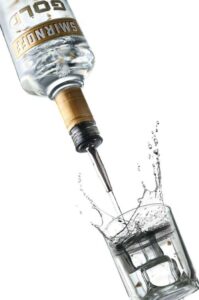 When commercial channels grew and geopolitical environments changed, vodka started to cross national boundaries. It was a well-known spirit throughout much of Europe by the 18th century, despite its continued strong cultural ties to its home nations.
When commercial channels grew and geopolitical environments changed, vodka started to cross national boundaries. It was a well-known spirit throughout much of Europe by the 18th century, despite its continued strong cultural ties to its home nations.
Its manufacture;
The majority of producers buy highly concentrated, previously distilled neutral spirits that have been cleaned and nearly entirely stripped of flavorings. These spirits are then further refined through a filtration procedure, which often uses charcoal, and are bottled without maturation after being diluted with distilled water.
Vodka’s smooth finish and almost non-existent flavor make it ideal for cocktails. You can find a variety of different types of vodka infused with flavours at Quest Liquor Store.
2. Tequila
Tequila is a distilled beverage made from the blue agave plant, which is mostly found in the Jalisco state in central western Mexico and in the Jaliscan Highlands. This beverage was employed in sacred rites by the Olmecs and, later, the Aztecs. It was used for different ceremonies over the centuries, mainly in offerings.
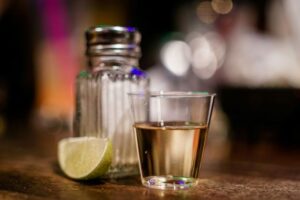
When brandy supplies ran low, the Spaniards made a drink out of mud and agave. In the early 1600s, the first extensive distillery was constructed in what is now Tequila, Jalisco, by the Spanish Aristocrat Marquis de Altamira.
The majority of tequila produced today is still made in Jalisco. It is important to note that as tequila spread across the world, the Mexican Government asserted in 1974 that the word ‘Tequila’ was its intellectual property. This made it unlawful for other nations to manufacture or market their own “tequila,” and it also required that tequila be matured and created in specific regions of Mexico. To further guarantee quality and advance the culture surrounding the spirit, the Tequila Regulatory Council was established.
Manufacture
The Aztec civilization in what is now northern Mexico produced the first form of it, known as pulque, from the fermented sap of the agave plant. Agave is fermented to produce a thick, milky liquid that tastes sour and has yeast undertones.
3. Gin

The modern form of gin is derived from an ancient Dutch beverage known as “jenever,” which was made by combining a neutral spirit with juniper infusion to soften the harsh flavor of grain-based malt wine. By the middle of the 20th century, Amsterdam and the Netherlands as a whole were producing enormous amounts of jenever.
The origins of gin were not always for pleasure, but for medicinal purposes. It is alleged that the drink was in use during the 11th century. In the 17th century, gin was promoted as a medical elixir with purported therapeutic benefits. It was thought to treat anything from stomach problems to kidney problems. The extensive intake of it at the time was probably influenced by this notion.
Manufacture
Berries from the juniper plant are the one component that all gins share. Gin is first made from a grain basis, typically barley or wheat, to which makers then add water and botanicals. For a spirit to be labeled as gin, juniper berries must be the primary flavor. A clear, colorless to pale yellow liquor that is distilled from pure spirits, typically derived from grain mash, and mostly flavored with juniper berries.
4. Rum
It was first discovered in the West Indies. Before it was even given that name, rum had another name. “Wine sugar” was the name of a beverage that existed long before the word “rum” was ever documented. The origins of the beverage most likely date back to the 14th century and involved wine sugar.
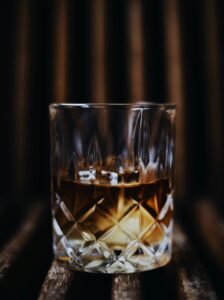
Though it was significantly different from black rum or over proof rums, wine sugar was probably extremely similar to the earliest official rums, even though the word rum didn’t exist at the time. It comprises both Jamaican rums, which are fuller-flavored and heavier than those from Cuba or Puerto Rico, and light-bodied rums from both regions. Rum was first recorded in Barbados archives in 1650, and it was first discovered in the West Indies.
Manufacture
Rum production has undergone modernization in another significant area: the maturation and aging process. In the past, rum has frequently been matured in barrels made entirely of oak to enhance its flavor and character.
The craft of aging Rum has garnered more attention in recent years, as distilleries have experimented with various oak barrel kinds, aging times, and processes to produce distinctive and nuanced flavor profiles.
5. Whisky
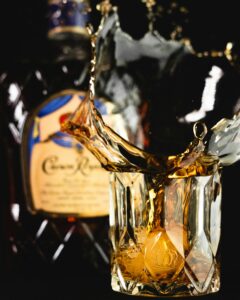 The Gaelic word “whisky,” which means “water of life,” is where the word first originated. The dialect of Celtic spoken in Scotland’s Highlands is called Gaelic. Though the quantity utilized varies depending on the type of whiskey, all whiskeys start with cereal grains. The most popular ones are corn, wheat, rye, and barley. The origins of whisky can be traced back to Scotland and Ireland before spreading to Europe and the rest of the world.
The Gaelic word “whisky,” which means “water of life,” is where the word first originated. The dialect of Celtic spoken in Scotland’s Highlands is called Gaelic. Though the quantity utilized varies depending on the type of whiskey, all whiskeys start with cereal grains. The most popular ones are corn, wheat, rye, and barley. The origins of whisky can be traced back to Scotland and Ireland before spreading to Europe and the rest of the world.
It is important to note that grain spirits that are made in Ireland and the US are referred to as whiskey (with a ‘e’). Grain spirits from Scotland, Canada, or Japan are referred to as whisky (no ‘e’).
Manufacture
Due to the variations in production techniques, cereal grain types and characteristics, and the quality and character of the water used, each nation’s whiskeys have a unique personality.
While Irish whiskeys lack the smokey flavor, they taste very similar to Scotch. They are made using techniques akin to those used to make Scotch whisky, except during roasting, the malt is not exposed to smoke. Three distillations are performed on Irish whiskeys, and occasionally they are combined with neutral grain whiskeys to create a product with a lighter body.
The unmistakable smoky malt flavor of Scotch whisky is paired with a rather light body. Their main ingredient is malted barley, which is roasted over a peat fire and flavoured by the pungent, oily smoke.
Early in the 19th century, the Canadian whisky industry had its start. Canadian whiskys are always blends of neutral grain whiskys and highly flavoured whiskies, giving them a light body and flavour. They are created from mashes that are formed using different proportions of corn, rye, wheat, and barley malt, prepared in accordance with each producer’s unique recipe.
6. Brandy
Around 1313, brandy was first made in France. It was primarily used as a medication, and because of its amazing strengthening and cleansing properties, doctors dubbed it “the water of life,” or “l’eau de vie,” a moniker it still goes by today. This cherished ghost has a lengthy past. Since the Middle Ages, it has been distilled in France, initially being used mostly for medicinal purposes. The term “burnt wine,” or brandewijn in Dutch, refers to the process of distillation using heat.

Manufacture
Brandy is an alcoholic beverage made by distilling wine or a fruit mash that has fermented. When the term is used alone, it usually refers to the grape product; brandies prepared from other fruits’ wines or fermented mashes are typically distinguished by the name of that particular fruit. Brandies are typically aged, with a few exceptions known as white varieties of fruit.
The use of paraffin-lined casks or earthenware preserves the original clear color, but the addition of a caramel solution darkens the color. Aging in wooden vessels intensifies the color to amber.
7. Cognac
Cognac, a brandy called for the nearby town of Cognac and made in the French départements of Charente and Charente-Maritime. The use of the name is restricted by French legislation to brandy produced from wine of a particular grape variety, matured in Limousin oak for a predetermined amount of time, and twice distilled in special alembics, or pot stills.
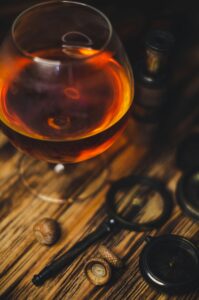
The Dutch arrived in France in the 16th century which is when cognac first appeared. They bought a lot of French wine, but found it difficult to keep it fresh on the way home, so they started distilling it to make eau-de-vie or water of life. Therefore, brandy as a whole is a distilled alcohol produced by fermenting grape juice. Any grapes at all, please. Though it is produced from grapes, cognac can only be manufactured from white grapes, unlike brandy. An interesting fact is that the dimensions and design of the stills used to produce cognac are regulated by French laws.
Manufacture
After grapes are squeezed, the juice uses the local yeast to ferment for two to three weeks. This is the finest example of native fermentation because cognac laws prohibit the addition of either sugar or sulfur. The resulting white wine, which is dry, acidic, and has about 8% alcohol after fermentation, needs to be double-distilled. Beautiful, antique Charentais Copper Alembic Pot Stills are used for the distillation process.
After distillation is finished and the spirit has reached a percentage of about 70%, it is placed in barrels made of French wood from Limousin or Troncais. By regulation, your cognac rests there for a least of two years.
After maturing, the Cognac is transferred to metal containers in preparation for final bottling or blending. While single vineyard and single age/batch Cognacs exist, it’s more typical for Cognacs of various ages to be mixed together in order to add complexity to the flavor.
Here at Quest Liquor Store, you can find a variety of drinks and you can trust that your order will be promptly delivered in excellent condition!

